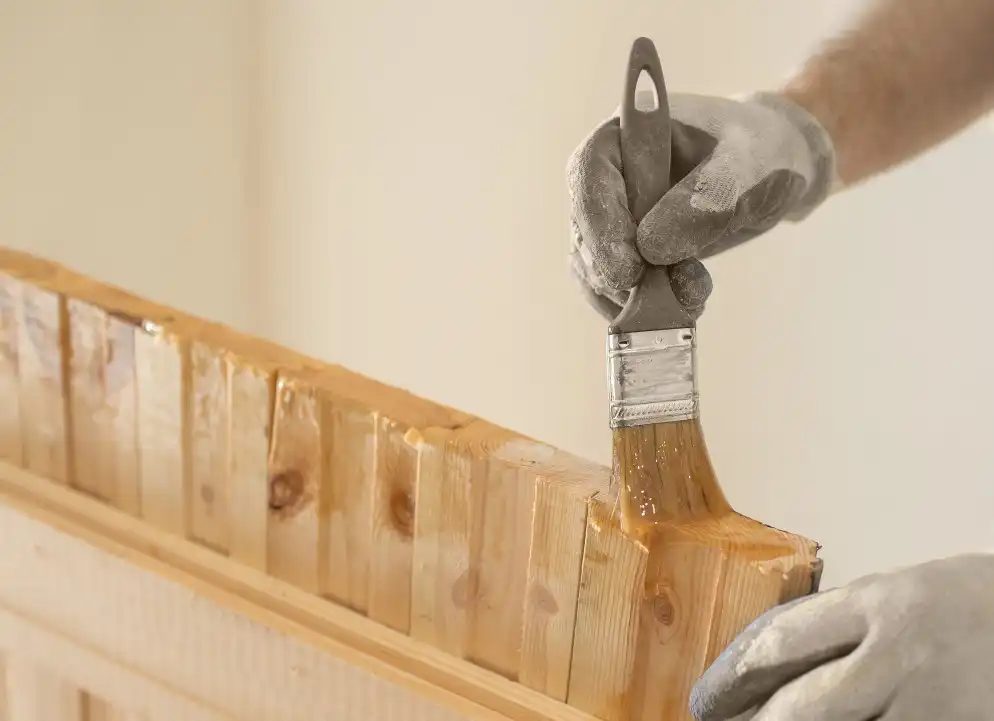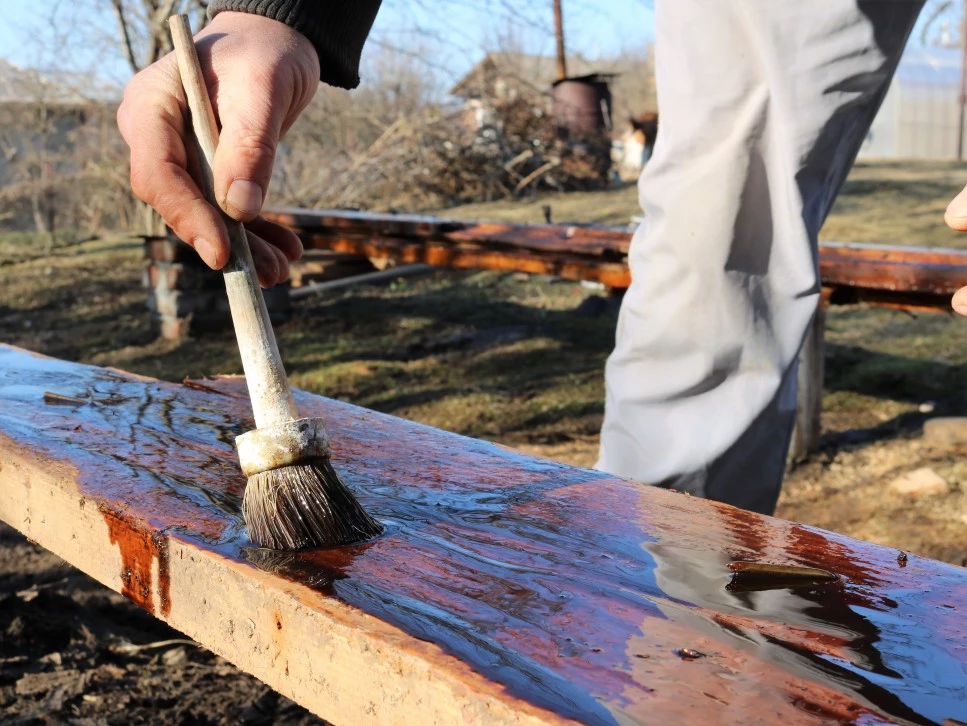Oil vs varnish outdoor furniture
To provide your outdoor furniture with a practical protective finish, it is advisable to use oil. A garden furniture oil is likely to nourish and protect your outdoor furniture. Oil finishes are more penetrative and often seep into the wood. This feature means it protects furniture from the inside out. Varnish is a thin shiny layer that covers mainly the outside; therefore, it can’t provide a very effective layer of protection. It commonly sits on top of the wood. When the oil dries on the inside of the wood, it benefits from the added trans-oxide pigments, providing additional UV protection. Oil should also protect you against mold and mildew.
Oil vs varnish indoor furniture
Wood varnish will be ideal for indoor furniture. Usually, the conditions indoors are less harsh than those outside. This means that the main focus will be on style and light protection for your indoor furniture. Wood oils are easier to use and provide you with more excellent protection, but they can smell too toxic indoors. The oil will also take longer to dry, which can be tedious.

Penetrating oil vs varnish
Consumers prefer penetrating oils because they do not create a thick finish. When using other options such as varnish, lacquer, or shellac, you may be unhappy with the built-up film aesthetic on your furniture. With this option, your wood is protected from the inside as the chemical soaks in and forms a very thin film at the surface.
Varnish vs tung oil
Pure tung oil will take you almost three days to dry thoroughly. Throughout this period, you will have to apply at least five coats. When it has finally hardened, it comes with a wide range of advantages. This feature is popular among consumers; however, oil/varnish blends and wiping varnishes will dry faster. The varnish will work better for beginners who want a more practical option.
Oil vs varnish wood floor
Oil surfaces are much easier to maintain because of the easy refinishing process. The oil is likely to wear off much quicker, but this option performs best against surface moisture. When you have wood, this is often exposed to surface moisture. The oil will eventually be sucked out of the wood. Using a varnish will make the finish lighter and easier to stain. This method is less resistant to water than lacquered or higher gloss oils.
Is it better to oil or varnish wood?
Varnish will be able to offer you a greater level of resistance to water. Elements like heat, solvents or other chemicals are also well handled by the product. The solution works to seal the surface. Consumers add this to indoor furniture to get a glossier finish than what you would get from oil.

What oil do you use on wood?
Linseed oil/flaxseed oil is one of the top options you can use on wood. This product works well for home applications because it can be hand rubbed in. It can seep deep into the wood, which helps guard against everyday friction. Your wood will be protected against scratches and changes in temperature.
What is the difference between varnish and wood oil?
Does wood oil stain wood?
Wood oils help protect bare wood and timber. You can place this oil over the top of wood stains. Many artisans use this oil to decorate their wood projects because the finish is attractive and has protective qualities. You can use this to contrast the shades of your wood grain. It makes the wood look new and natural.
Can you use oil instead of varnish?
How do you make your varnish?
- Boiled linseed oil
- Mineral spirits
- Varnish as needed.
Mix 1/3 Boiled Linseed Oil with 1/3 thinner and 1/3 varnish.
Is Danish oil the same as varnish?
Danish oil is a wood finish with similar qualities to oil/varnish. The product contains the elements that make up both penetrating oil and varnish. Polyurethane is a standard finish used on wood because of its synthetic resin and shiny finish. The benefits of this differ from natural finishes.
Can you oil over varnished wood?
Varnish can be applied in the same manner you would use pure oil. Flood it on, wipe it all off, and repeat with one coat per day until you get the build you want. The techniques required for these actions are similar.
Can you stain wood that has been oiled?
There are wood stainers that function well with oil. If you use one of these oil-based stainers, it will work well.
Is linseed oil a varnish?
“Linseed oil varnish” can be produced from raw linseed oil, used as a clear varnish. Linseed oil varnish works to protect wood naturally.
Is linseed oil better than varnish?
Linseed oil helps the wood retain moisture. This feature works to prevent shrinkage. Varnish is different because it coats wood with a hard surface. This ability is different from linseed, which seeps into the wood.
Should you oil wood before varnishing?
How do you prepare wood for varnishing?
You first want to clean the wood thoroughly. Begin by removing the dirt, oils and grease. This action can be performed with a paint thinner. Make sure there are no open holes. If there are, then fill them in with filler. Sand along the grain of the wood and vacuum clean it.
Can you use linseed oil before varnish?
You can use linseed oil before varnish if it has cured into a hard resin.
Can you put varnish on top of linseed oil?
It is possible to use varnish after the linseed of you are using boiled linseed oil. Make sure it has been cured enough.
Can you put varnish over Danish oil?
Danish oil doesn’t require sealing. If you choose an oil-based varnish, you should be able to complete this task without any challenges.
Can you stain the wood after oiling it?
You can use a water-based oil finish and apply it directly over prepared bare or stained wood.
- 6 Tips To Craft The Perfect DIY Woodworking Project - August 1, 2022
- Six Reasons You Need an Air Filter In Your Wood Workshop - August 1, 2022
- American made wood lathes - May 26, 2022